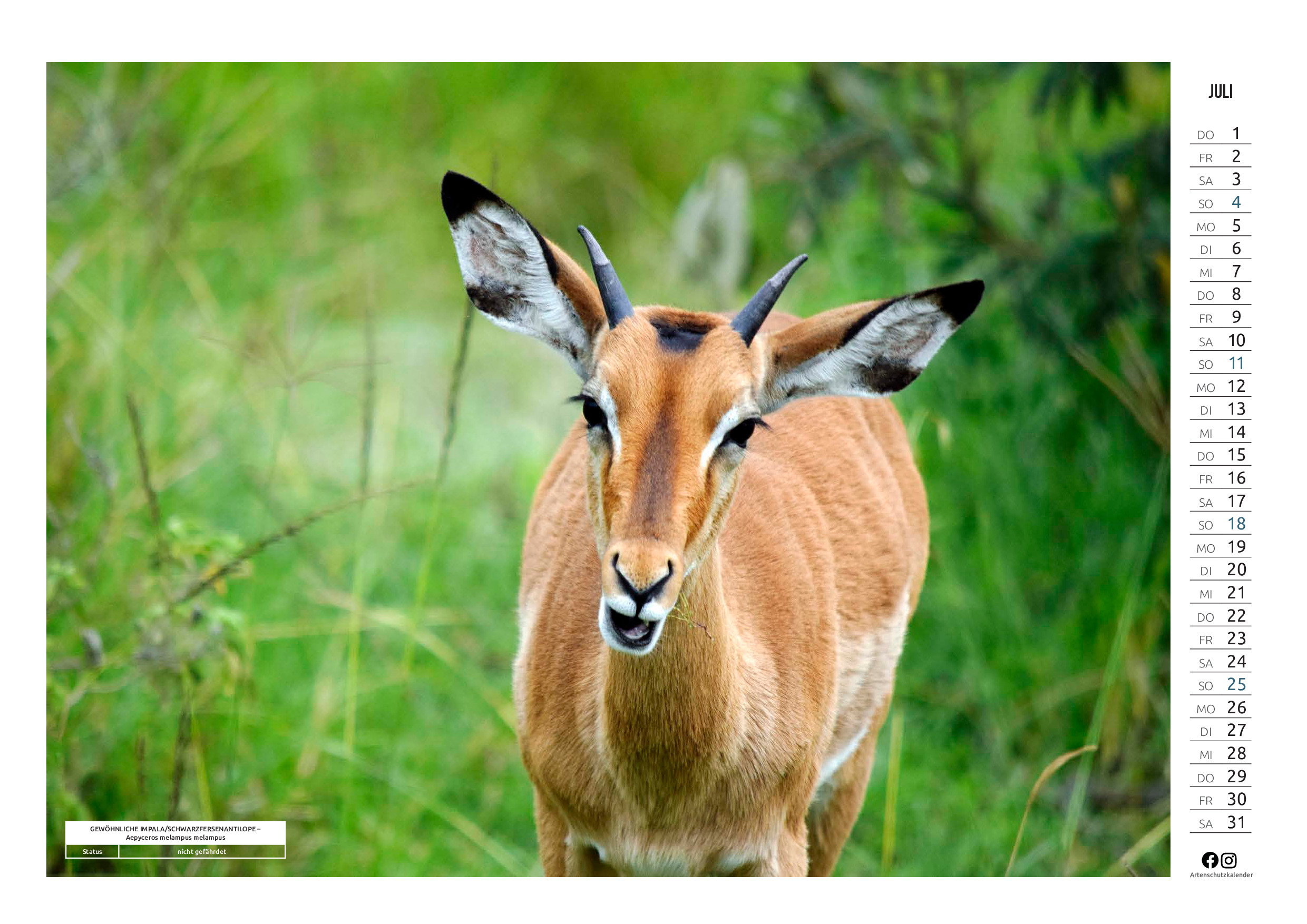Impala are well known antelopes, which basically are spread in large parts of Africa. Within the group of bovids they form an own subfamily consisting of two species. One of them is the rare and endangered black-faced impala, which mainly lives in Namibia, while the common impala is having a wide range in Eastern and Southeastern Africa. The German name of the common impala translates back to black-heel impala – in fact the species has a black spot on their hind heels.

Juvenile male. The black spots on the hind heel can be seen well on this picture. Picture taken at Zoo Osnabrück
The pictures shows a few months old male impala. He is grown fairly tall but his horns are still small. Female impala remain without horns. Characteristics are the slim body and the large black-and-white colored ears. When the young male turns about one year old he will be kicked out of his herd and will be looking to join other males of his age to form a vital bachelor group. They offer another protection against predators and at the same time they learn to fight. It takes about four years until they are old, powerful and experienced enough to challenge a proven male to ideally take over his herd. Females have an easier life, they remain within their herd of birth and become sexually mature when they are about 1.5 years old.

Female Impala
For antelopes of their size impalas turn relatively old. In the nature males reach an age of about ten years, while females live about 14 years. In zoos singular animals are supposed to have turned 25 years old. In the wild they have numerous enemies who want to prevent impalas from turning this old. Most dangerous for these antelopes are leopards, followed by African wild dogs. Also other carnivores are dangerous for them but lions, hyenas and cheetahs do not have them high on their list as favorite food. Juveniles also are endangered from the air since birds of prey can take the small impalas up into the air. Despite of all the dangers the numbers of common impalas is estimated to be about two million.

Young but fully grown male impalas in their final stages in their bachelor group.
